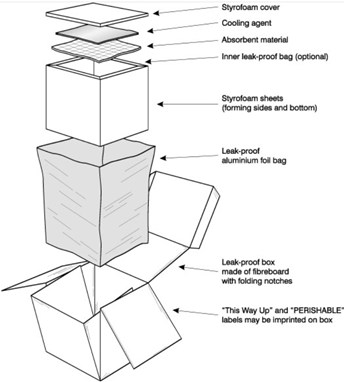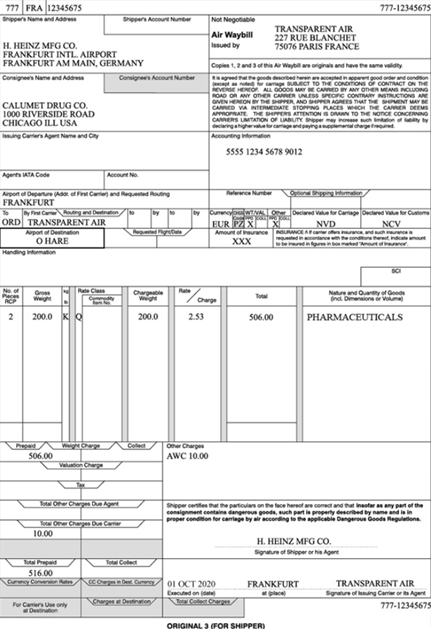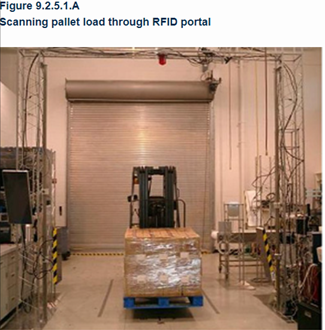Tips on How to Handle Temperature-Controlled Goods to Maintain Product Quality
Every year, vaccines sent by air save 2.5 million lives. It is critical that these vaccines, along with other medicines, utilize temperature-controlled shipping and cold storage facilities.
Why is temperature-controlled shipping so important?
Manufacturers of vaccines and other pharmaceuticals rely on high quality cold chain logistics to get their products safely from door to door. Vaccines that require temperature-controlled shipping must be stored between (2℃–8℃) or -20°C to maintain the potency of their active ingredients. Losing their effectiveness means wasting expensive products or getting ineffective vaccines to the people who need them most.
What to look out for when shipping temperature-controlled goods
When it comes to cold chain shipping, there are always a few key elements to consider: cold storage facilities, regulatory compliance, and cold chain management. These three areas ensure that your product moves smoothly through the cold chain process. Proper cold chain logistics means a cohesive flow from one stakeholder to the next throughout the process.
1. cold storage
Successful temperature-controlled shipping depends heavily on adequate cold storage. Some pharmaceuticals require -20ºC storage conditions from product stability tests under Temperature Control Regulations (TCR), which is why manufacturers need to be sure that appropriate cold storage is always available throughout the shipping process.
2. Compliance with Government Regulations
In addition to the IATA regulations, there are also specific requirements that must be met at the airline and government level. It is the responsibility of the shipping companies to ensure that all government regulations are complied with. Section 2 of the Handbook provides helpful information on governmental regulations for different states that shipments may transit through or arrive at their final destination.

3. cold chain management
Pharmaceutical companies are increasingly relying on air transportation for their high quality cold chain management. While every precaution can be taken when packing temperature controlled goods, the rest of the journey is overseen by proper cold chain management. Cold chain management ensures that the delivery arrives without loss of quality due to insufficient protection or a breakdown in cold chain logistics.
How to keep the cold chain running
In order for the cold chain to function properly, you must first understand the guidelines and know the regulations. For this reason, the IATA Temperature Control Regulations are essential. Competence in shipping, handling and storing temperature-controlled goods is a prerequisite for success. A solid knowledge base prevents errors, damage and mishandling. Strong cold chain management ensures that every step in the entire process runs smoothly.
3 ways the TCR can help your business
Maria Jitomirski, Specialty Cargo Expert at IATA, gives three reasons why the TCR is of great use for the safe transport of cold chain goods.
1. Improved partnership
The application of Temperature Control Regulations (TCR) creates a solid understanding of the necessary precautions that need to be taken in relation to cold chain transport. Users receive step-by-step instructions to comply with applicable regulations. Knowing that a carrier or trucking company is knowledgeable and competent in handling expensive pharmaceuticals safely creates a confidence factor that may not otherwise be present. A good education in the best practices and regulations enhances strong cold chain logistics and allows all stakeholders to work better together.
2. Minimal Loss
The TCR includes explicit information on the proper shipping, handling and storage of temperature-controlled goods, ensuring a higher percentage of shipments arrive at their final destination intact. This is particularly important with respect to life-saving drugs, where the integrity of their efficacy depends on cold storage stability.
3. Improved expertise
Stakeholders who follow best practices and comply with the regulations presented in the TCR are considered more knowledgeable than those who do not. Manufacturers know exactly where they stand when they hire a company that follows IATA standards and regulations. This is all the more true when companies are CEIV-Pharma-certified.
3 key factors that the TCR will help with
IATA’s Temperature Controlled Regulations (TCR) are an invaluable tool that guides through the process of safely handling and shipping temperature-controlled goods by air. While the policies and regulations contained in the TCR aim to bring temperature-controlled goods door-to-door, there are three key factors that help shippers in this process: shipment compliance, labeling and marking, and traceability and tracking.
1. Shipping Compliance
Shipping compliance relies on understanding and meeting the requirements outlined in the Temperature Control Regulations (TCR). The TCR guides the reader through the process step by step. Before you can meet IATA requirements, it is important to understand shipping regulations at the carrier and government levels. Therefore, it is necessary to understand every aspect of shipping policies not only for safety reasons, but also to ensure that the temperature controlled shipment arrives in the highest quality possible. This involves knowing the facts about the type of goods being shipped so that the correct packaging can be selected, and then ensuring that the correct labelling, marking and documentation is in order. Without complying with the regulations at the shipper level, the shipment could be refused shipment.

2. Labeling & Marking
Cold chain shipping requires all shipments to have proper labeling and identification on the outer packaging. This enables safe handling of the shipment throughout the cold chain logistics process.
Labels should conform to IATA standard requirements for color and size. Proper labeling is particularly important for perishable goods as they are intended to be treated as “wet cargo”. When shipping containers of dry ice, shippers should consult the IATA Dangerous Goods Regulations (DGR) for proper labeling and marking.
In terms of labeling, each package should be clearly labeled with the recipient’s information and specific instructions on the nature of the content as per Section 7.7 of the TCR.

Shipments containing medicinal products should include more detailed instructions on proper handling procedures.
Temperature control regulations should be documented and placed so that all handlers can clearly read their instructions.
3. Traceability & Tracking
Traceability and tracking has become a necessity in the temperature controlled shipping industry. Traceability and follow-up are critical when dealing with shipments such as pharmaceuticals where the integrity of controlled substances could be an issue.
Previously codebars and microwaves were used, today the latest technology is RFID (Radio Frequency Identification) and offers many advantages.
While the RFID system is more expensive, the investment is worthwhile when shipping expensive medicines worldwide. As RFID becomes more widespread, costs will inevitably fall.
The use of RFID helps to speed up the handling process of cold chain logistics. Whether pallets, crates and containers are to be transported effectively to the cold store or through customs, RFID reduces manual handling and saves time.

Why are standards and regulations important?
Rules and regulations form the basis for successful cold chain transport. The Temperature Control Regulations (TCR) are the industry-recognized standard for best practices for safely transporting goods that require strict cold chain management. Standards and regulations are based on scientific data and information compiled from various airlines to ensure that temperature-controlled goods are shipped in the fastest, safest and most efficient way possible without damaging the product.
The handbook is published to assist shippers, freight forwarders, ground operators, airlines and everyone else involved in cold chain shipping, so that life-saving medicines arrive at their destination with the highest possible quality.
Who sets the standards and regulations for shipping temperature-controlled goods by air?
The Temperature Control Regulations are published annually on behalf of the IATA Cargo Services Conference. It is updated by the Live Animals and Perishables Board (LAPB), while the Time and Temperature Working Group (TTWG) chimes in and provides their expertise and guidance.
Shipping medicines is a life-saving endeavor; however, it is an expensive one. Because of this, it is vital that all stakeholders adhere closely to the standards and regulations specific to their role in cold chain logistics. The rules and regulations are proven to mitigate damage and product loss while ensuring the safety of those involved in cold chain shipping of expensive medicines.
Is training required when shipping temperature-controlled goods?
Temperature-controlled goods do not require special training. However, you can get certified through courses like Temperature Controlled Cargo Operations. This course provides competency-based training on the packaging requirements and air cargo industry best practices for storing, receiving and handling time and temperature sensitive healthcare shipments.
There is also the Center of Excellence for Independent Validators in Pharmaceutical Logistics (CEIV Pharma), designed to ensure facilities, equipment, operations and personnel comply with all applicable standards, regulations and policies expected of pharmaceutical manufacturers.
In addition, when using dry ice as a coolant for shipments, those involved must receive specific hazmat training.
Where to get more information
Cold chain transport is vital to the well-being of millions of people worldwide. Having a solid knowledge of how to properly play your role in shipping temperature-controlled goods is good business sense. How do you get this knowledge?
Get started today by getting the Temperature Control Regulations (TCR).
IATA has been working diligently to create safer environments for all stakeholders in the aviation industry for almost 80 years. Their extensive knowledge helps create a wide range of comprehensive and easy-to-use security manuals, which you can find here. IATA manuals are a sound investment and you won’t find the expertise that IATA offers anywhere else.